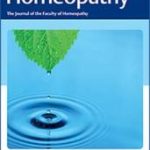Dezső Csupor, Klára Boros, Judit Hohmann
Low Potency Homeopathic Remedies and Allopathic Herbal Medicines : Is There an Overlap?
PLOS One, 2013, 8 (9), e74181
Classical homeopathy is based on the therapeutic application of highly diluted homeopathic stocks. The indications of such medicines are determined by proving, i.e. by applying the remedies in healthy subjects. However, there are several complex homeopathic medicinal products on the market with approved therapeutic indications. The efficacy of these medicines has been assessed in clinical trials on patients. There is no upper limit of dosing for such homeopathic remedies, and these products often contain undiluted mother tincture. The aim of our study was to compare an allopathic herbal medicine and a homeopathic product containing undiluted mother tincture based on the same plant. Two products (an allopathic herbal medicine and a homeopathic product) containing Vitex agnus-castus extract were analyzed by HPLC-DAD for their agnuside and casticin contents. The agnuside content of the allopathic product was approximately four times higher, while the amount of casticin was in the same order of magnitude. Our experiments revealed the presence of active ingredients in allopathic quantity in a homeopathic preparation, highlighting the controversy between the principles of classical and practice of contemporary homeopathy. According to the principles of classical homeopathy these remedies cannot be considered as homeopathic remedies but rather as (allopathic) herbal ones. This phenomenon necessitates a case-by-case approach towards the possible adverse effects and drug interactions of homeopathics in the daily medical practice. Homeopathic products containing active agents in allopathic doses should be treated the same way as allopathic medicines from the point of view of quality assurance and pharmacovigilance.





